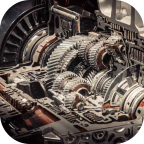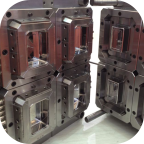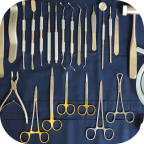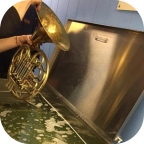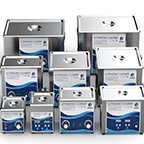Revolutionizing Industrial Cleaning: The Role of Ultrasonic Transducers in Modern Applications
Browse Volume:38 Classify:Support
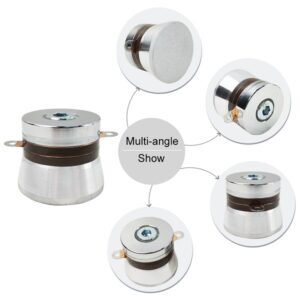
Industrial cleaning has undergone a significant transformation with the advent of ultrasonic cleaning technology. At the core of this innovation lies the ultrasonic transducer, a device that converts electrical energy into high-frequency sound waves, enabling the efficient removal of contaminants from complex surfaces. From automotive parts to medical instruments, ultrasonic transducers have become indispensable in ensuring precision and reliability in industrial cleaning processes. This article explores the science, design, and applications of ultrasonic transducers, shedding light on their critical role in modern industrial cleaning systems.
The Science Behind Ultrasonic Transducers
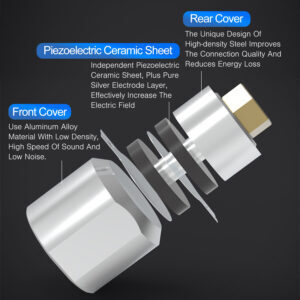
Ultrasonic transducers operate on the principle of piezoelectricity, where certain materials, such as lead zirconate titanate (PZT), generate mechanical vibrations when subjected to an electric field. These vibrations produce sound waves at frequencies typically ranging from 20 kHz to 200 kHz, which are then transmitted into a cleaning solution. The resulting phenomenon, known as cavitation, creates microscopic bubbles that implode, generating shock waves capable of dislodging even the most stubborn dirt and grime.
The efficiency of an ultrasonic transducer depends on its ability to maintain consistent frequency and amplitude. Advanced designs incorporate feedback mechanisms to monitor and adjust these parameters in real time, ensuring optimal performance across varying load conditions. This precision makes ultrasonic transducers ideal for applications requiring high levels of cleanliness, such as semiconductor manufacturing and medical device sterilization.
Key Components and Design Considerations
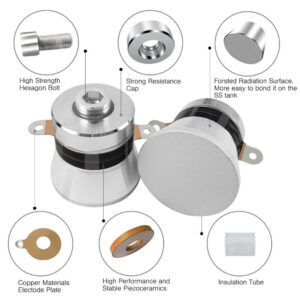
1. Piezoelectric Crystals:
The heart of an ultrasonic transducer is its piezoelectric crystal, typically made from materials like PZT. These crystals are chosen for their high electromechanical coupling efficiency, which minimizes energy loss during the conversion process.
2. Electrodes and Housing:
Electrodes are attached to the piezoelectric crystal to apply the electric field, while the housing provides structural support and protects the internal components from environmental factors. The design of the housing also influences the transducer’s resonance frequency and durability.
3. Matching Layers:
To optimize energy transfer between the transducer and the cleaning solution, matching layers are often incorporated into the design. These layers reduce impedance mismatches, ensuring that more energy is transmitted into the liquid for effective cavitation.
4. Cooling Systems:
High-power ultrasonic transducers generate significant heat during operation. Advanced designs incorporate cooling systems, such as water jackets or heat sinks, to maintain optimal performance and extend the lifespan of the device.
Applications of Ultrasonic Transducers in Industrial Cleaning
Ultrasonic transducers are used in a wide range of industrial cleaning applications, each requiring specific frequency and power settings:
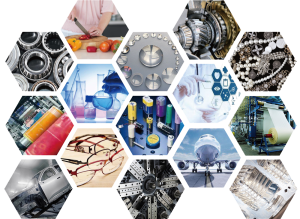
1. Automotive Industry:
Ultrasonic cleaners are widely used to remove grease, oil, and metal shavings from engine components and other automotive parts. The ability to clean complex geometries without disassembly makes them invaluable in this sector.
2. Medical and Dental Instruments:
In healthcare, ultrasonic transducers ensure the thorough sterilization of surgical tools and dental instruments. The high-frequency vibrations remove blood, tissue, and other contaminants, ensuring compliance with hygiene standards.
3. Electronics Manufacturing:
The electronics industry relies on ultrasonic cleaning to remove flux residues and other contaminants from printed circuit boards (PCBs) and semiconductor components. The precision of ultrasonic transducers ensures that delicate components are not damaged during the cleaning process.
4. Aerospace and Defense:
Ultrasonic cleaning is used to maintain the integrity of critical components in aerospace and defense applications. The ability to clean intricate parts without causing wear or corrosion is essential in these high-stakes industries.
Advancements in Ultrasonic Transducer Technology
Recent innovations have significantly enhanced the performance and versatility of ultrasonic transducers:
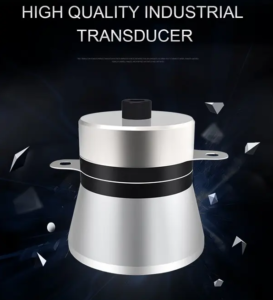
1. Multi-Frequency Transducers:
Modern ultrasonic cleaners often feature multi-frequency transducers, allowing users to switch between frequencies for different cleaning tasks. This flexibility improves efficiency and reduces the need for multiple cleaning systems.
2. Digital Control Systems:
The integration of digital control systems enables precise adjustment of frequency, power, and cleaning cycles. These systems also provide real-time monitoring and diagnostics, ensuring consistent performance.
3. Energy-Efficient Designs:
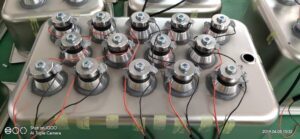 Advances in materials and engineering have led to the development of energy-efficient transducers that consume less power while delivering superior cleaning results. This is particularly important for large-scale industrial applications.
Advances in materials and engineering have led to the development of energy-efficient transducers that consume less power while delivering superior cleaning results. This is particularly important for large-scale industrial applications.
4. Miniaturization:
The trend toward miniaturization has resulted in compact ultrasonic transducers that are suitable for portable and handheld cleaning devices. These innovations are expanding the use of ultrasonic cleaning in new markets.
Challenges and Future Directions
Despite their many advantages, ultrasonic transducers face several challenges that researchers are actively addressing:
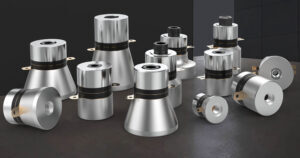
1. Heat Management:
High-power transducers generate significant heat, which can affect performance and longevity. Future designs may incorporate advanced cooling technologies or heat-resistant materials to mitigate this issue.
2. Material Limitations:
The piezoelectric materials used in transducers are often brittle and prone to fatigue. Ongoing research aims to develop more durable materials that can withstand prolonged use without degradation.
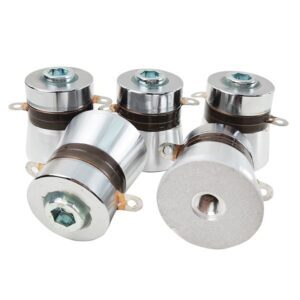
3. Cost and Accessibility:
While ultrasonic cleaning technology has become more affordable, high-end systems remain costly. Efforts to reduce production costs and improve accessibility are expected to drive wider adoption.
4. Integration with IoT:
The integration of ultrasonic transducers with Internet of Things (IoT) platforms is a promising area of development. Smart ultrasonic cleaners could offer remote monitoring, predictive maintenance, and automated cleaning cycles, further enhancing their utility.
The ultrasonic transducer is a cornerstone of modern industrial cleaning technology, enabling precise and efficient removal of contaminants across a wide range of applications. As advancements in materials, design, and digital control continue to evolve, these devices are poised to become even more versatile and effective. Whether in automotive, healthcare, or aerospace, the role of ultrasonic transducers in shaping the future of industrial cleaning cannot be overstated.
References
1. Made-in-China. (2025). *New & Latest Ultrasonic Cleaning Transducer Products*. Retrieved from [Made-in-China](https://www.made-in-china.com/new-products/ultrasonic-cleaning-transducer.html).
2. Beijing Xiwei Ultrasonic. (2021). *Ultrasonic Transducer Cleaning*. Retrieved from [Made-in-China](https://www.made-in-china.com/showroom/cathyxiao1012/product-detailBBlnWhvKwSVX/China-Ultrasonic-Transducer-Cleaning.html).
3. Kepeida Ultrasonic Equipment. (2014). *Ultrasonic Cleaning Manufacturer*. Retrieved from [Made-in-China](https://www.made-in-china.com/showroom/summeryyang).
4. Yuhuan Clangsonic Ultrasonic Co., Ltd. (2025). *Ultrasonic Cleaner Manufacturer*. Retrieved from [Made-in-China](https://clangsonic.en.made-in-china.com/).
5. UCESONIC. (2025). *Ultrasonic Generator and Ultrasonic Transducer*. Retrieved from [Ultra-Piezo](https://www.ultra-piezo.com/).
6. Iborn Ultrasonic Equipment. (2025). *28Khz 50W Ultrasonic Transducer for Cleaning Equipment*. Retrieved from [ECVV](https://m.ecvv.com/product/5008836).
 GranboUltrasonic
GranboUltrasonic

